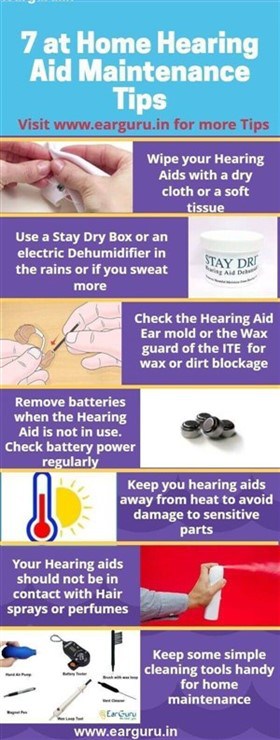Whether you are a new hearing aid user or may have been using hearing aids for some years. It’s important to know that proper care and maintenance of hearing aids will extend their life span and reduce instances of repairs, and this can be easily done at home.
Hearing aids should be ideally maintained as per the instructions given in the manufacturer’s user manual. However, the basic care and maintenance of hearing aids are the same for all brands, types, and models. All you need to do is follow these simple tips for care and maintenance of hearing aids to keep them in good working condition for years to come.
Tips For Care and Maintenance of Hearing Aids
Follow the home care for hearing aids routine regularly to get many years of trouble-free performance.
1. Wipe Your Hearing Aids Clean With A Dry Cloth or Tissue
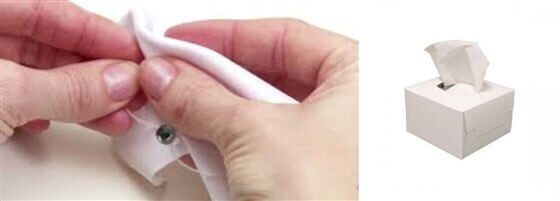
Water, Moisture, and dust are the 3 biggest enemies of electronic devices. Sweating is very common in summer and with people working in factories and workshops. For people who sweat excessively, it is advisable to use hearing aid sweat protectors made from water resistant spandex material. Read our article on What To Do If Hearing Aids Get Wet?
At the end of the day, it is advisable to clean the hearing aids externally with a soft dry cloth or a soft tissue.
Caution: Do not use any spray or solvent to clean the hearing aid, unless recommended by the manufacturer.
2. Use a Stay Dry Box or An Electric Dehumidifier for Hearing Aids
After cleaning them from outside, we have to ensure that the moisture inside the hearing aid should also dry up. Before retiring for the night keep them in a Stay Dry Box or an electric dehumidifier for hearing aids.
It is advisable to remove the battery and leave the battery compartment open. This allows the air to circulate inside the hearing aid and absorb the moisture settled on the circuit board.
What Is A Dehumidifier?
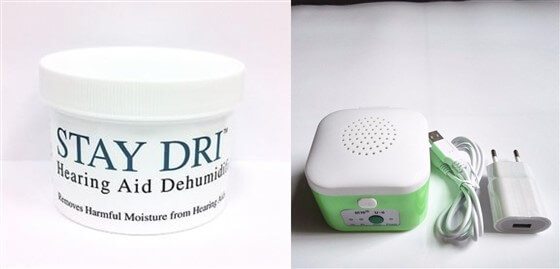
A Dehumidifier is a device that removes the moisture collected in the hearing aid due to humidity or sweat. Moisture, water, and sweat are enemies of electronic devices, using a dehumidifier is an important step in the care and maintenance of hearing aids.
What Are The Different Types Of Dehumidifiers.
There are two types of commonly used dehumidifiers:
- The simple type uses Silica Gel granules which absorb the moisture that has seeped into the hearing aid. Most of the hearing aid manufacturers offer a dehumidifier box with Silica Gel sachets or pellets.
The Silica Gel is color indicating, the color change indicates that it has absorbed all the moisture it can and needs a replacement. Replace the Silica Gel as per the manufacturer’s instructions.
- The electric dehumidifier for hearing aids is more effective as it blows warm air resulting in evaporation of moisture. It also draws out the moisture-filled air.
Do not expose your hearing aids to rain or use them in the shower. Read our blog on what to do if hearing aids get wet?
3. Check the Hearing Aid for Dirt or Wax Accumulation
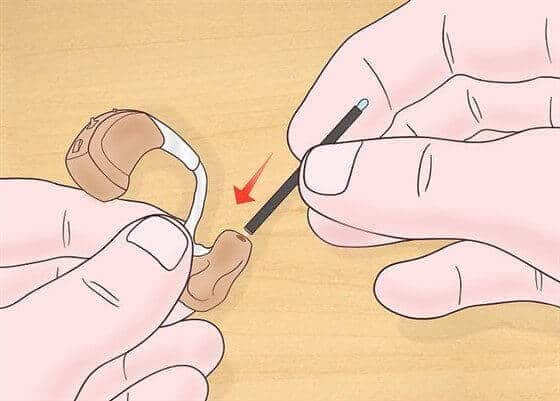
If your hearing aid output has reduced, first check whether the opening of the earmold or the opening of the ITC or CIC is blocked. Chances are that earwax has blocked the opening thereby reducing the output. Earwax is a natural secretion of the ear and is healthy, but some people secrete excess earwax that can block the opening. it is advisable to clean your ears regularly if the secretion is excessive.
Change Wax Guard Regularly
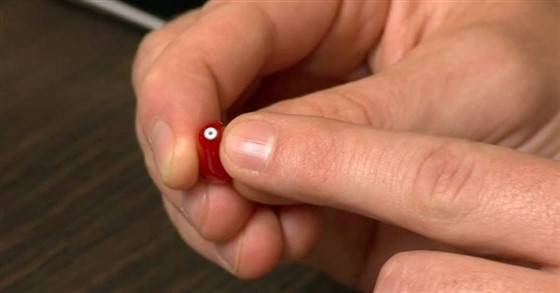
If you are using an “In the Ear” hearing aid, and notice the earwax or dirt blocking the opening, do not attempt cleaning or removing the dirt. You have to replace the wax guard; every manufacturer provides extra wax guards for replacement. In case you are unable to change yourself please visit your dispenser.
Change Microphone Guard if Blocked
Similar to a wax guard that prevents earwax from blocking the opening, hearing aids also have microphone guards or filters. Since hearing aid microphones are outward-facing, it’s possible that dust may settle on them.
Replace the microphone guards. Your hearing aid dispenser will help you source the mic guards and can offer you practical tips on the care and maintenance of hearing aids.
4. Check The Hearing Aid Batteries
If you are a regular hearing aid user, you are more or less aware as to how long the batteries last. Always keep spare batteries at hand. In case you are not using the hearing aids for a few days, it is advisable to remove the battery and store it elsewhere. A leaked battery can damage the internal circuit of the hearing aid.
Check out the tips on prolonging the life of your batteries by reading our blog on all you want to know about Hearing aid Batteries.
It is important to insert the battery the right way by keeping the positive and the negative polarity in mind.
5. Keep Your Hearing Aids Away From Heat
Hearing aids have delicate parts that are responsible for the sound quality. Keep your hearing aids in a cool, dry place so that they keep working flawlessly.
Do keep the following tips in mind.
- Do not keep the hearing aids in direct sunlight.
- Do not keep the hearing aids in the glove compartment of the car while the air conditioner is off or the car is parked in the sun.
- Do not use a hairdryer if you are wearing your hearing aids.
6. Keep Your Hearing Aids Away From Sprays, Powder Etc.

Avoid use of the following substances while you are wearing the hearing aids
- Hair sprays or hair gels
- Spray perfumes or deodorants
- Shaving creams or shaving foams
- Powder
Avoid all sprays or fine dust like powder which can block the Hearing Aid openings or have solvents in them. Aerosol spray cans contain chemical solvents.
7. Keep Some Handy Tools for Home Care for Hearing Aids
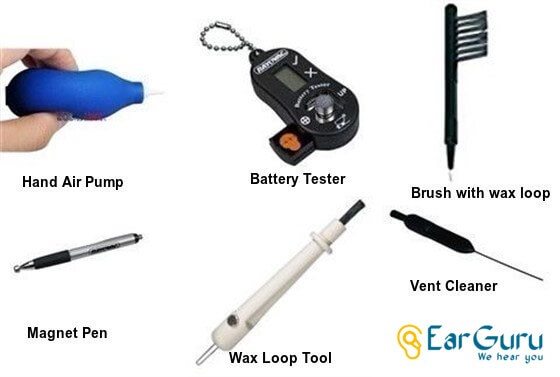
Handy Tools For Care and Maintenance of Hearing Aids
Hand Air Pump
A simple easy to use rubber pump helps in blowing away the dirt in the earmold.
Hearing Aid Battery Tester
Very simple to operate, insert the battery in the tester. It will show whether the battery is good to use or not. Do not leave dead batteries in the hearing aid.
Hearing Aid Cleaning Brush
Simple brush, clean the external part of the hearing aid, especially the In the ear type as earwax may stick to the outer part of the hearing aid.
Magnet Stick or Magnet Pen
Small hearing aids have tiny batteries, at times it’s difficult to hold and insert them. This handy tool will hold the battery which can be easily placed in the battery compartment.
Wax Loop Tool or Stick
The tool has a wire loop, this wire loop can remove the wax from the ear mould opening, keeping the mould clean,
CAUTION: Do not use the wire loop on hearing aids that have wax guards.
Vent Cleaning Tool
Some Hearing aids have vents, vent is a tiny opening for sound balancing. The tool can be used to clean and ensure that the vent is not blocked.
Hearing aids should be handled and used with care, after all, they are an extended part of our ear. Avoid dropping them or keeping them carelessly on a hard surface. With proper care and maintenance of hearing aids, you will get years of trouble-free performance.
